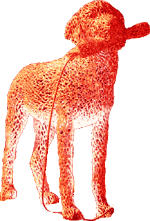Bronwen Clune's article on this subject for the Guardian was illustrated by a big image of a green tick and a red cross, and that sums up my problem with fact checking sites: that there is not enough nuance in the ratings allowable. Politifact has five possible ratings: false, mostly false, half true, mostly true and true. This leads it to conclude that the ALP line that the Coalition will cut 20,000 public sector jobs is false. The reality is more complex than that, however. If you just concentrate on what the Coalition has said, then you can't find much evidence of the 20,000 number. Labor's argument, however, is that the confirmation of the higher figure is implied by the sums in the Coalition's budget plan, based in part on Treasury analysis which has been running in the media for the last day or two.
For Politifact to look narrowly at whether the Coalition said it would cut 20,000 jobs misses the point, and allows the Coalition to sail by unscrutinised on the implications of its announced policies. Where is the analysis by Politifact on whether the Coalition can actually save the amount of money it claims will be saved by cutting only 12,000 jobs? That is a job for an economist, and Saul Eslake did that job, which earned him the opprobrium of the Coalition.
Politifact's concentration on the words, not the numbers, means that they are now setting themselves up in opposition to what Eslake said. We have duelling fact checkers, one checking the words which describe the numbers, and one checking the numbers which underpin the words. Who is right? They could both be right within the confines of the tasks they set themselves, but they both miss the broader picture.
In the new world of journalism after the giants fall, some will fall victim to the tendency not to tell the whole story. Journalism will become fragmented, an ecology of disparate parts instead of the omnibus juggernauts of yore. If you are setting yourself up as a beacon of truth, however, you should tell the whole truth, not just a part of it. The sin of omission will allow your words to be used by partisans in ways you do not intend. Be effusive in your ratings, please.
I am not talking about the ever-so-slightly better descriptors used by the ABC, like "outdated", or "checks out". These are just synonyms for wrong and right. Loosen it up a bit. Inject some entertainment. I was a fan of Australian writer Paul-Michael Agapow's Postviews back in the day when newsgroups were still a meaningful thing, which used in its movie reviews a Sid and Nancy scale to bring a non-linear element into end-of-review scoring. Thus, the 1996 movie Jude was scored as:
[*/misfire] and a ski holiday without snow on the Sid and Nancy scale.And the 1987 movie Mr India was:
[***/interesting] and Sauerkraut westerns on the Sid and Nancy scaleNot so difficult, is it? One other weakness of fact check sites is that they can be painfully earnest. Entertain while you educate! The funny bit may be the takeaway that is most memorable. Get that stick out of where it's lodged, stop pretending that you are cyborg high priests of truth, and add some personality back into these things.


No comments:
Post a Comment